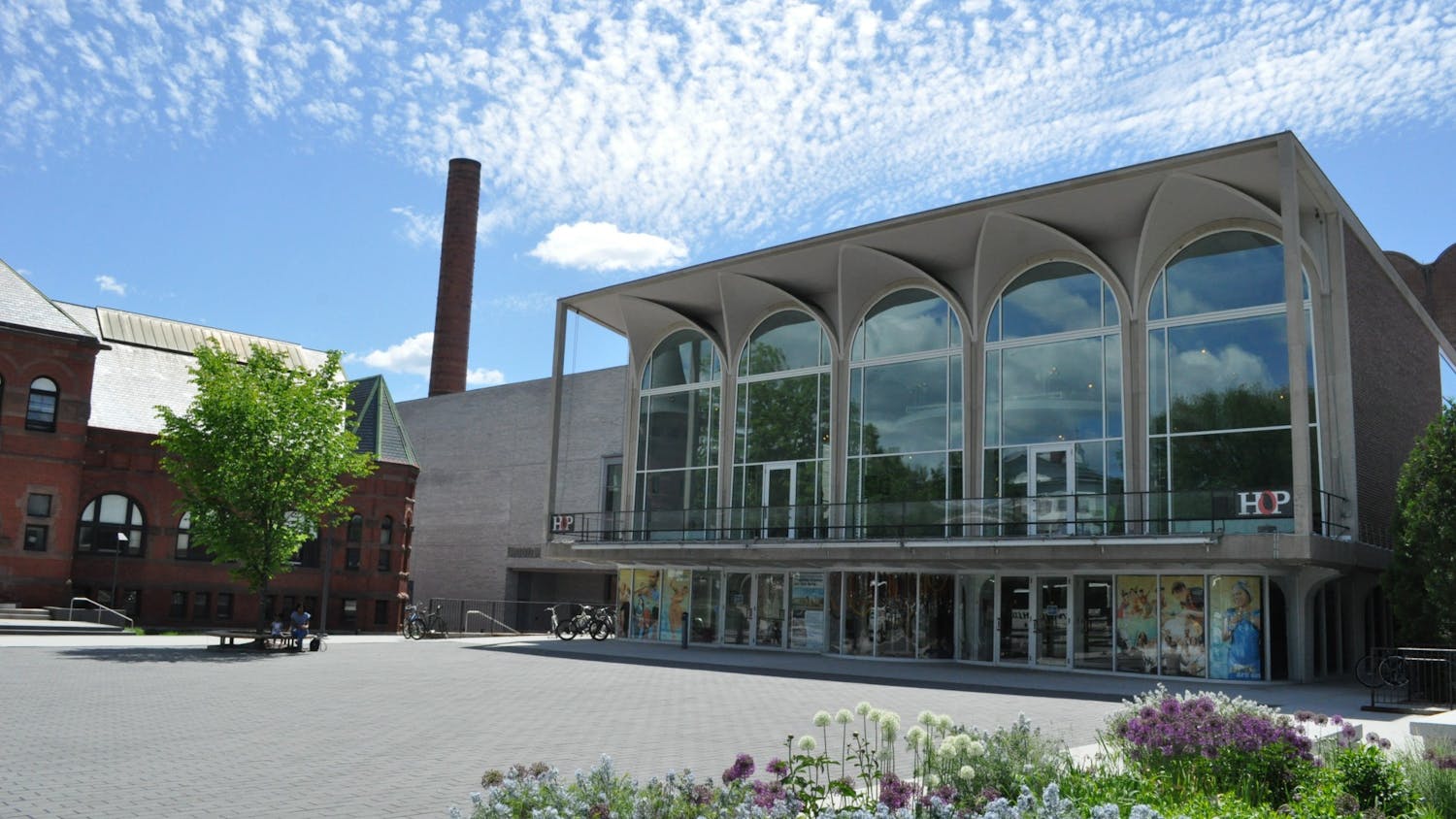The exhibit will remain on display for the remainder of the term, though some items were available only for the opening, according to AREA co-director Travis Weyneth '10. The show serves as a way to display artwork directly from Greek houses on campus including pong tables, paddles and photographs of murals while exploring the relationship between the otherwise separate domains of the basement and the art gallery, according to Weyneth and co-directors Stephanie Trejo '10 and Elizabeth Klinger '10.
Much of the exhibit is composed of photographs of various works of art taken by the organizers in fraternities, sororities and coed societies.
"This process was a photo exploration of the houses," Klinger said in an interview with The Dartmouth, "It took from the beginning of the term until now to set everything up, with getting permission, taking the photographs, and acquiring the donations of tables, paddles and art submissions."
In addition to the documentary photographs, the exhibit features student submissions, including original photos and paintings, that explore the topic of Greek life.
Many Greek organizations on campus contributed to the showcase, including Delta Delta Delta, Epsilon Kappa Theta, Sigma Delta and Kappa Delta Epsilon sororities; Sigma Alpha Epsilon, Gamma Delta Chi, Sigma Nu, Chi Heorot, Psi Upsilon and Alpha Delta fraternities; Amarna and Panarchy undergraduate societies; and Alpha Theta coed fraternity.
Central to the showcase was an arrangement of beautifully designed pong tables from Theta and Heorot. Theta displayed one table with their "Thetaroo" logo and one that paid homage to Dr. Seuss (Theodor Seuss Geisel '25). Heorot also had two contributions one with the faces of Jimi Hendrix, John Lennon, Bob Marley and Jim Morrison on a tie-dyed background, and one with an array of scattered records that was comparable to an art major's best work.
"When people are playing pong, they don't realize that they are playing on art," Weyneth said.
The exhibit also includes a selection of artistic pong paddles from various houses including several decorated with the insignia of Hogwarts houses by Theta displayed on a corkboard or in shadowboxes on the main wall.
A handful of photos by AD member Matt Wang '10 used Keystone beer as its subject, with empty cans hanging from a tree's limbs like leaves.
Other submissions moved the focus of the exhibit beyond pong, including a wooden sculpture of a Native American from AD and a coffee table made out of beer bottle caps from KDE.
Photographs of murals in Greek houses also comprised a large part of the exhibit, capturing the importance of wall art to each organization.
"Frats and sororities can paint the walls and make it their own, but people can't paint the walls in dorms. This allows every house to have its own culture," Weyneth said of the practice of painting murals in Greek houses.
"AREA Goes Greek" also features some pieces in more traditional media including sculpture and painting by both affiliated and unaffiliated students, all of which relate to the theme at least tangentially. These included a psychedelically painted toilet titled "Throne of Matisse" by Geoff Holman '10, a painted portrait of a fraternity brother titled "My Frat Boy" by Kari Cholnoky '10 and an interesting creation made from Keystone beer cans and a .45 record titled "Spring Break Prototype Dance Floor" by Trey Roy '09 and Michal Jablonski '09, currently students at the Thayer School of Engineering.
Visitors to the exhibit were encouraged to consider the often unexplored links between art and Greek life.
"It's a strange and interesting combination: pong and art," Susan Edwardson '12, who attended the event, said. "People don't stop to notice during pong that they are playing on art, or they would lose the game. It's amazing the creativity, from the walls, to the paddles, to the pong tables themselves. The artistic vibes from the frats make the activities that take place inside seem okay, like a perfect balance between chill and chaos."
Saturday's opening was free and open to the public, with performances by the Decibelles and members of Barbary Coast and refreshments provided by the Hanover Inn. AREA received funding from Student Assembly and Panhellenic Council, which according to Weyneth "brought together the Greek community and the student community."




